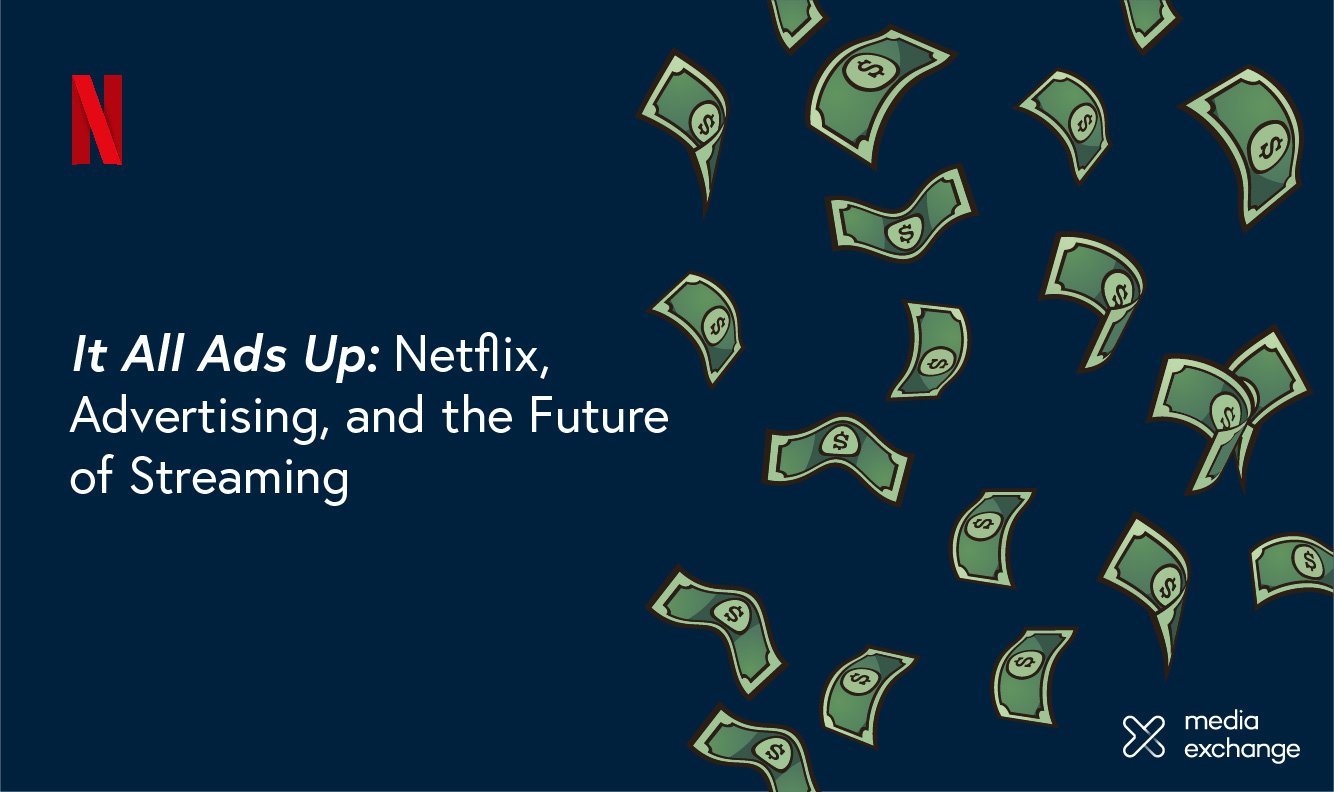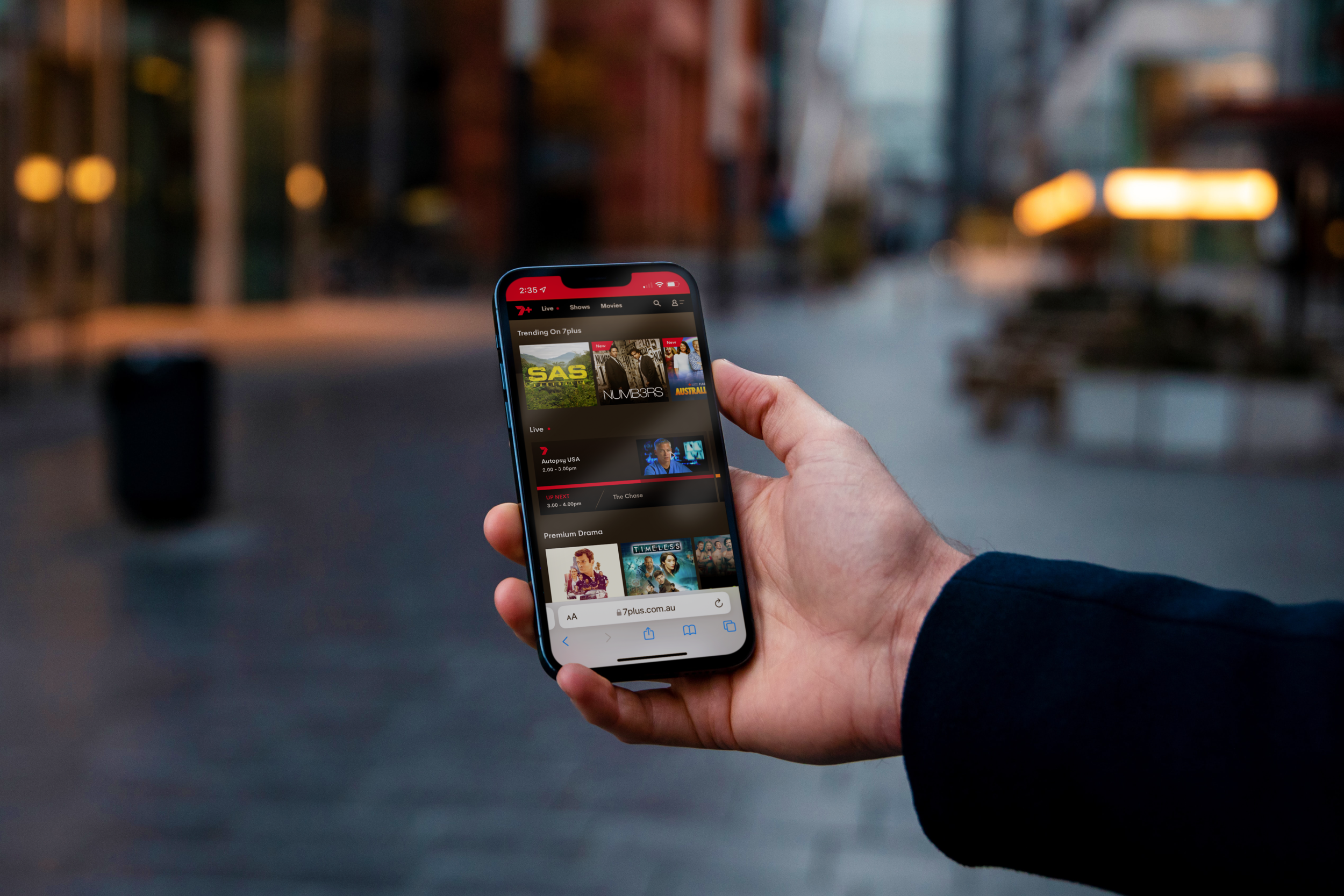It All Ads Up: Netflix, Advertising, and the Future of Streaming
Netflix opened 2022 with their first quarterly loss of subscribers in a decade, watching as around 200 thousand switched off their subscription. It got worse, too: in the second quarter almost a million subscribers quit the service, leading many to speculate whether Netflix was on the verge of significant decline, and what the future of streaming looks like.
Apparently, it looks a lot like traditional free to air television: Netflix announced soon after that they would be introducing an ad-supported subscription tier at a lower price point.
On face value, this didn’t seem like a big deal: streaming platforms get advertising revenue, advertisers get space, and users get cheaper access to great content. If they don’t want ads, they can continue paying for the premium service — simple.
On top of that, plenty of other streaming platforms, like HBO Max and Paramount Plus, already offer an ad-supported tier. Not to mention the incoming tier from Disney+.
But Netflix is the clear market leader. When they announced it, something felt… different.
Now the conversation is about what’s to come for all TV, and what it could mean for everyone involved.
Content for all
The main benefit is obvious: Netflix’s ‘Basic with Ads’ tier — launched last month — costs $7 a month in Australia. Cheaper pricing means more consumers can watch Netflix’s content. This helps two main groups of people:
Existing subscribers concerned with price: Inflation is being felt everywhere, and as wallets tighten, streaming subscriptions could be a casualty. A cheaper subscription provides an alternative that won't mean breaking the bank or losing premium content.
Non-subscribers and previous customers: A cheaper entry point could be very persuasive for people to try the service or reactivate. Yes, they’ll have to contend with ads, but if they aren’t paying for streaming, then they’re already watching ads on whatever form of TV they’re using.
The ad-supported tier services these people who sit in the middle. Consumers on extremes will continue unaffected — many will pay to watch without ads, and many won’t pay at all. The real question is how extensive this middle section is.
Put another way: will anyone actually use this? The average household in Australia already has over 4 entertainment subscriptions, which shows we aren’t unwilling to spend on content. But it depends on a user’s perception of the content’s value. If linear TV and BVOD already offer a variety of shows with ads for free, then everything Netflix offers has to be perceived as more valuable.
Personally, I don’t really see this being an issue. I’m a huge sucker for 7Plus having old Smallville episodes available on-demand, for sure! But Netflix has Stranger Things, the new season of which just generated their biggest premiere weekend ever for an English-language series. Viewing stats all point to the same fact: their content is simply perceived as higher quality.
The only thing standing in the way of users jumping onto the cheaper tier is that they might just stay with the premium subscription, which is a win either way for the platform and its users. But it isn’t a win for everyone.
Enter: the advertisers.
New space, new me?
“It’s not like we [are] against advertising, to be clear. But that’s not something that’s in our plans right now.”
This was Netflix CFO Spencer Neumann in just March of this year. By April, after their now infamous first quarter earnings report, the tone had changed.
With the amount of subscribers and eyes watching content on Netflix, advertisers should be jumping at the opportunity to get brands on the platform. But time will tell whether it translates into significant gains for brands. If users stick with the premium options, advertisers lose. But even if users switch and ads get seen, it’s unclear whether anyone will benefit except the biggest brands out there.
Netflix is seeking a minimum annual ad spend of US$10 million, with what they’ve described as a “soft $65 CPM” (cost per thousand views). They’re asking… a lot. And right now, we still can’t be sure how many subscribers are actually viewing these ads on the cheaper tier. Especially considering that — after two disappointing quarters — Netflix added 2.4 million subscribers back in Quarter 3. Before Basic with Ads dropped.
Multimillion dollar brands will pay it because they can, but others will either see it as too big a risk for the investment, or just be priced out completely.
If that’s the case, the rich just get richer, consumers see all the same brands they already know, and smaller brands are crushed even further underfoot. Does Maccas really need more coverage?
Owning the market
Of course, Netflix is fine with it because they’re earning money, which has quickly become a high priority. They’ve laid off hundreds of employees in recent months, begun cracking down on password sharing, and seen their stock drop considerably. After years of being against introducing ads, are they pivoting just because of financial pressures?
Not to mention the fact they bumped up the release date of the tier to November, edging out Disney’s December release. In the immortal words of Ricky Bobby:
(Ignoring the fact that they weren’t first anyway, but whatever.)
Having a more financially accessible tier gives Netflix a new kind of flexibility against competitors, which they hope to use in driving new subscriptions. They’ve made themselves even more competitive based on ad load too: the ad load per hour is limited to around 4 minutes, much lower than linear TV which hovers around 13 minutes.
For the consumer, this should be exciting news: you do have to contend with ads, but far fewer than many initially expected. With such a dramatic difference from other TV ad loads though, Netflix could be doing it to justify their relatively monstrous CPMs. Less ad supply means the competition for what there is will naturally increase, which means a neat payday.
Netflix’s mission is “to entertain the world”. But this time, it feels like they might just be entertaining their bottom line.
Development or decline
As we noted, plenty of other streaming platforms already have ad-supported tiers, so this isn’t exactly ‘groundbreaking’. Other brands might feel a little wary of Netflix stepping into this territory, as it could prompt switching to what many perceive to be the best platform out there. But with most people paying for multiple subscriptions, it probably won’t lead to a huge drop in numbers for everyone else.
If anyone should be worried, it’s the bigwigs at the free to air networks. Not just because people are switching to other forms of TV more every year, but because this impacts on their digital channels too.
Subscribers to Netflix’s ‘Basic with Ads’ will pay $7 a month. That’s obviously 7 bucks more than BVOD’s free offering, but the content is in a completely different class, and with a decreased ad load.
Netflix is making money moves — it just so happens that they’ll probably work for the consumer too.
TV consumption is already skewing heavily towards streaming: the percentage of viewers using SVOD platforms has grown every year, while free to air continues to drop off, to the point where streaming took over for the first time in 2021. Even the fact that free to air networks are starting to prioritise BVOD in their plans is indication enough: TV’s new world order is well and truly digital.
It’s not like free to air will be dead as soon as Netflix drops their prices. Things like daily news and sports — particularly in Australia — are still huge drivers of interest and viewers. There haven’t been many moves in that area from the major streaming players.
Netflix clearly isn’t stupid, though. Neither are Disney+, Prime Video, or any of the other biggest competitors. If they really want to dominate all of TV, sooner or later we could see Netflix Aus put in a competing bid for the AFL, or the summer of cricket.
Is that the future: TV entirely behind a paywall?
Time to switch?
Ok, maybe I’m being a little dramatic. But change happens at a dramatic pace. Netflix was a DVD rental business only 15 years ago, after all.
(It still technically is, actually. Not relevant to this article; it’s just a pretty neat fact.)
It will be interesting to see how many subscribers this new tier gets. If this plan comes off, it should work well for everyone — platform, advertiser, and user — and firmly damage Netflix’s traditional competitors.
If it doesn’t quite appeal to users though, it could spell issues. Advertisers probably won’t be too keen to pay an arm, leg and other available body parts if their ads aren’t reaching enough people. If too many advertisers pull out or hesitate, Netflix could find themselves in another financial conundrum.
This isn’t saying they’ll fall apart if this tier doesn’t pay off — of course not. They’re Netflix. But it could even the playing field a little more than they might like, and there are a lot of heavy hitters ready in the wings.
I would love to sign off with a faux-poetic statement like: ‘we’re about to bear witness to the battle for television’s soul’, or something ridiculous like that, but that’s (probably) pushing it a little. Instead, as an entertainment junkie, I’m simply intrigued to see how it all unfolds on the screen — and behind the scenes.
I just have to figure out how much I’m willing to pay for that.








